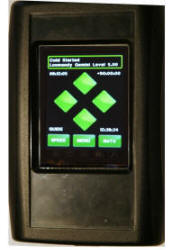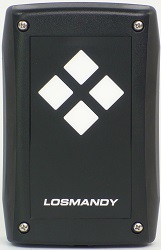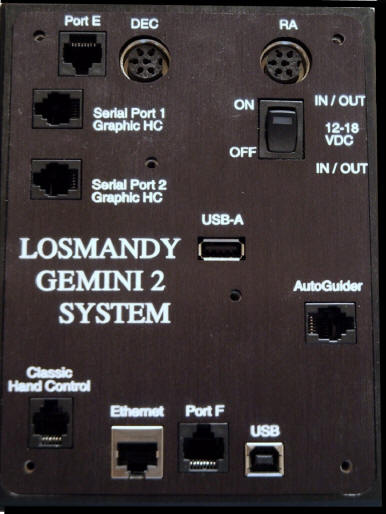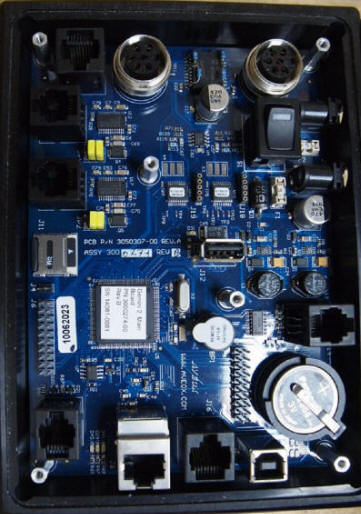
Front View of HC
click on picture to see larger view
click again to see internal views

Rear Side of HC
- The Graphics hand controller is composed of a touch screen on the front and a membrane push buttons on the back.
- It has it's own ARM processor and communicates with the main unit over a serial channel communicating at 57600 baud. It connects into the Serial Port 2/Graphic input jack on the main unit. It also has an Micro-SDcard that holds the Catalogs amd button graphics. This card is updated from the main unit.
- It uses the same command set as any observatory program would use to communicate with the main unit.
- Here is a tutorial of it's complete interface.
- Click here for an explanation of the Front and back Button Operation of the Hand Controller
- It does not contain an battery, It does not have an ethernet address of it's own.
- This older version of the hand controller uses a graphics card and display not designed by Losmandy, and because of this there are about 4 different versions of this unit graphics processor.

